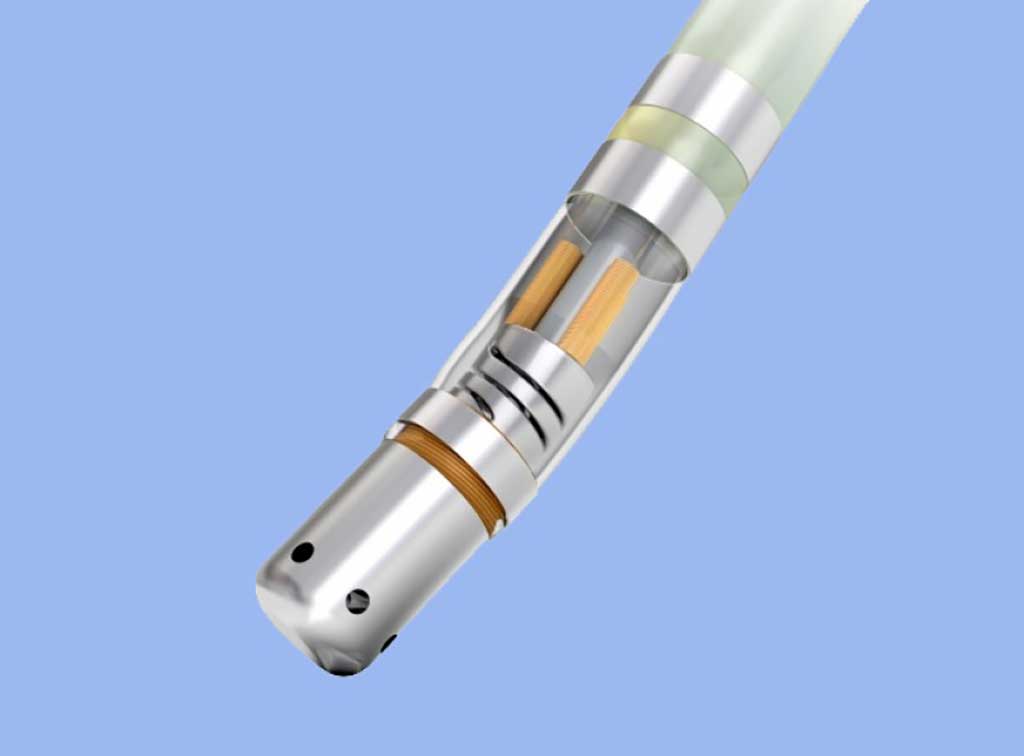Smart Ablation Catheter Treats Persistent Atrial Fibrillation
By HospiMedica International staff writers
Posted on 27 Oct 2020
An innovative catheter offers a patient-tailored ablation approach that provides long-term efficacy for atrial fibrillation (AF) patients.Posted on 27 Oct 2020
The Biosense Webster (Diamond Bar, CA, USA) Thermocool Smarttouch SF Catheter is intended for patients suffering from drug-resistant paroxysmal AF, persistent AF, sustained monomorphic ischemic ventricular tachycardia (VT), and Type I atrial flutter. When coupled together with the proprietary CARTO 3 System, which delivers radio frequency (RF) energy to the device and provides the control interface, physicians can achieve stable, consistent application of contact force by providing direct, real-time quantitative feedback during catheter ablation procedures.

Image: The Thermocool Smarttouch Catheter (Photo courtesy of Biosense Webster)
In a study that enrolled 381 patients with documented symptomatic persistent AF who did not respond or were intolerant of antiarrhythmic drug (AAD), a tailored radiofrequency (RF) ablation strategy was used, with pulmonary vein isolation (PVI) and additional left atrial ablations (PVI+) performed at the operator's discretion, based on the patient's disease state. The results showed that 80% of persistent AF patients experienced clinical success at 15 months following ablation therapy, and 86% experienced freedom from repeat procedures.
“Atrial fibrillation is a progressive disease that becomes harder to treat as symptoms become more severe,” said Uri Yaron, worldwide president of Biosense Webster. “We are committed to advancing clinical evidence in partnership with physicians, and this data is encouraging as we continue on our quest to help people live their best lives possible – making sure AF never stands in the way.”
PVI was developed to prevent focal triggers in the pulmonary veins from initiating episodes of AF. The procedure initially involved focal ablation with a catheter directly in the pulmonary veins, but isolating the pulmonary veins by applying ablation energy at their junction with the left atrium was found to be more effective. The PVI procedure is most suitable for patients whose recurring symptomatic episodes of AF that have not been suppressed by AAD, or who do not wish to take long-term anti-arrhythmic or anticoagulation medications.
Related Links:
Biosense Webster














.jpg)